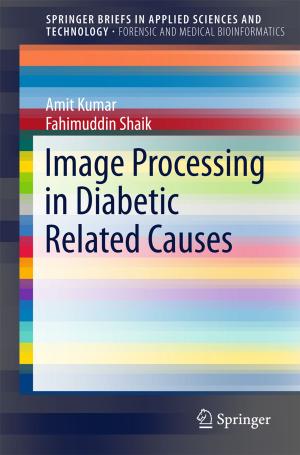Insulin Resistance - ECAB
Nonfiction, Health & Well Being, Medical, Specialties, Internal Medicine, Endocrinology & Metabolism| Author: | Gita Ganguly Mukherjee | ISBN: | 9788131232217 |
| Publisher: | Elsevier Health Sciences APAC | Publication: | October 26, 2010 |
| Imprint: | Elsevier India | Language: | English |
| Author: | Gita Ganguly Mukherjee |
| ISBN: | 9788131232217 |
| Publisher: | Elsevier Health Sciences APAC |
| Publication: | October 26, 2010 |
| Imprint: | Elsevier India |
| Language: | English |
Insulin is responsible for glucose uptake into the body cells and tissues. The response of the cells to insulin varies from individual to individual. In some individuals, the tissue response to insulin may be diminished. This means that even with adequate levels of insulin, the glucose uptake into the cells and tissues is not optimal. This results in a compensatory over-secretion of insulin from the pancreas. The
persistence of high levels of insulin in the blood or hyperinsulinemia is thought to be responsible for some of the abnormalities associated with this condition. However, the exact causal association of the condition with these disorders and the pathophysiology of their evolution are unclear.
The most common underlying mechanism proposed is increased free fatty acids from abdominal fat in individuals with central obesity. This leads to deranged insulin signaling, reduced muscular glucose uptake, increased triglyceride synthesis, and hepatic gluconeogenesis. A genetic basis of the disease as well as several other factors such as tumor necrosis factor-a, adiponectin, leptin, Interleukin-6, and some adipokines have also been implicated.
Insulin resistance syndrome is of clinical significance because of its association with potentially debilitating conditions that contribute to long-term morbidity and even mortality of the individual. People with insulin resistance syndrome are at an increased risk of developing type 2 diabetes, hypertension, dyslipidemia, myocardial infarction, polycystic ovarian disease, and fatty liver.
In this book, we have tried to collate the experiences of the pioneers of this field on the subject and provide the reader a comprehensive view on the topic along with practical management points, which we are sure will benefit the physicians in their clinical practice. The contributors have focused on the condition as is prevalent in our subcontinent and have tried to give an insight on the issues pertaining to the same with a topical flavor.
Insulin is responsible for glucose uptake into the body cells and tissues. The response of the cells to insulin varies from individual to individual. In some individuals, the tissue response to insulin may be diminished. This means that even with adequate levels of insulin, the glucose uptake into the cells and tissues is not optimal. This results in a compensatory over-secretion of insulin from the pancreas. The
persistence of high levels of insulin in the blood or hyperinsulinemia is thought to be responsible for some of the abnormalities associated with this condition. However, the exact causal association of the condition with these disorders and the pathophysiology of their evolution are unclear.
The most common underlying mechanism proposed is increased free fatty acids from abdominal fat in individuals with central obesity. This leads to deranged insulin signaling, reduced muscular glucose uptake, increased triglyceride synthesis, and hepatic gluconeogenesis. A genetic basis of the disease as well as several other factors such as tumor necrosis factor-a, adiponectin, leptin, Interleukin-6, and some adipokines have also been implicated.
Insulin resistance syndrome is of clinical significance because of its association with potentially debilitating conditions that contribute to long-term morbidity and even mortality of the individual. People with insulin resistance syndrome are at an increased risk of developing type 2 diabetes, hypertension, dyslipidemia, myocardial infarction, polycystic ovarian disease, and fatty liver.
In this book, we have tried to collate the experiences of the pioneers of this field on the subject and provide the reader a comprehensive view on the topic along with practical management points, which we are sure will benefit the physicians in their clinical practice. The contributors have focused on the condition as is prevalent in our subcontinent and have tried to give an insight on the issues pertaining to the same with a topical flavor.















